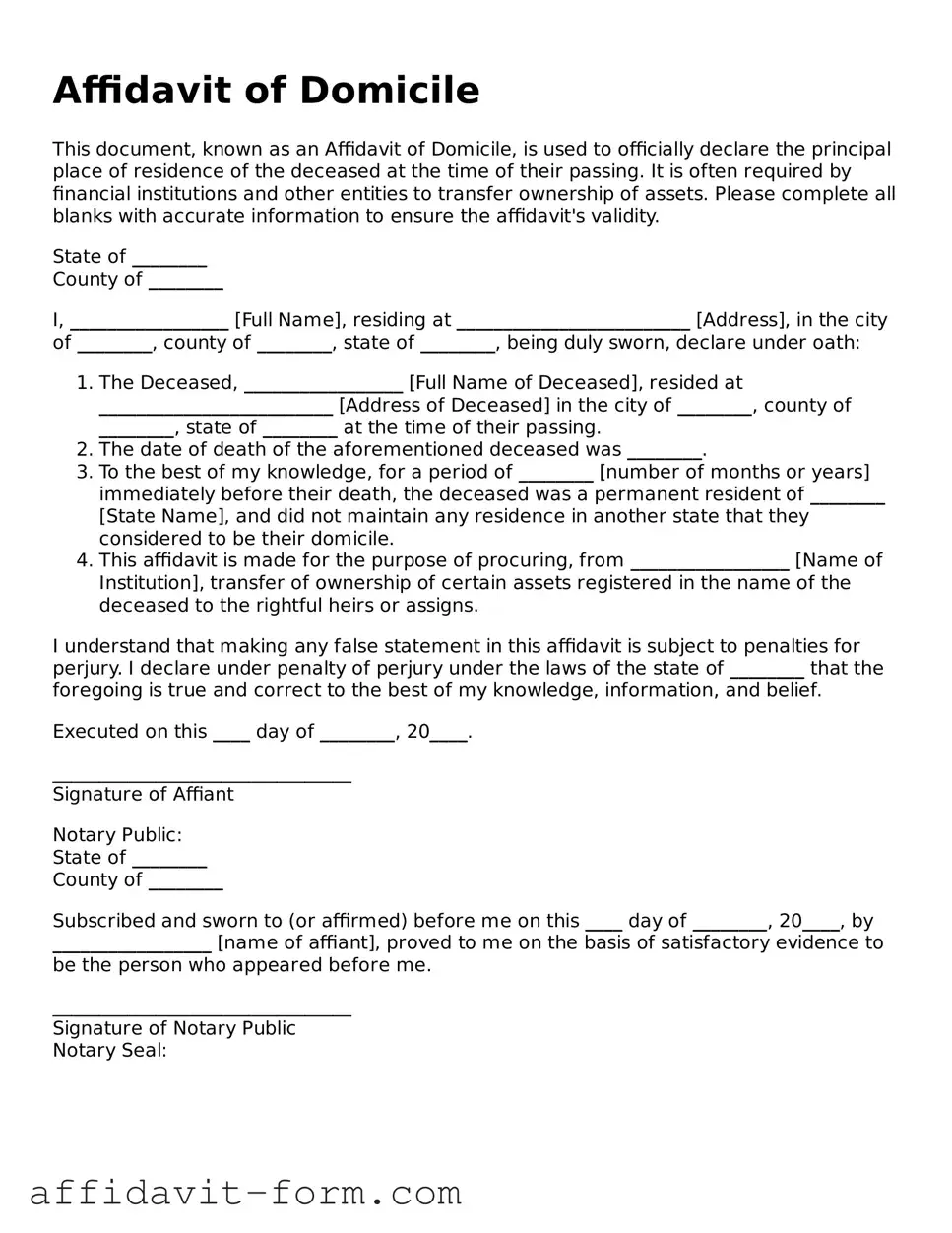Affidavit of Domicile
This document, known as an Affidavit of Domicile, is used to officially declare the principal place of residence of the deceased at the time of their passing. It is often required by financial institutions and other entities to transfer ownership of assets. Please complete all blanks with accurate information to ensure the affidavit's validity.
State of ________
County of ________
I, _________________ [Full Name], residing at _________________________ [Address], in the city of ________, county of ________, state of ________, being duly sworn, declare under oath:
- The Deceased, _________________ [Full Name of Deceased], resided at _________________________ [Address of Deceased] in the city of ________, county of ________, state of ________ at the time of their passing.
- The date of death of the aforementioned deceased was ________.
- To the best of my knowledge, for a period of ________ [number of months or years] immediately before their death, the deceased was a permanent resident of ________ [State Name], and did not maintain any residence in another state that they considered to be their domicile.
- This affidavit is made for the purpose of procuring, from _________________ [Name of Institution], transfer of ownership of certain assets registered in the name of the deceased to the rightful heirs or assigns.
I understand that making any false statement in this affidavit is subject to penalties for perjury. I declare under penalty of perjury under the laws of the state of ________ that the foregoing is true and correct to the best of my knowledge, information, and belief.
Executed on this ____ day of ________, 20____.
________________________________
Signature of Affiant
Notary Public:
State of ________
County of ________
Subscribed and sworn to (or affirmed) before me on this ____ day of ________, 20____, by _________________ [name of affiant], proved to me on the basis of satisfactory evidence to be the person who appeared before me.
________________________________
Signature of Notary Public
Notary Seal:
